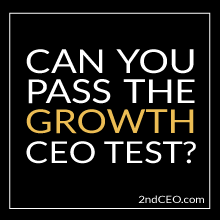Congratulations! You’ve started a successful company. And now that you have achieved a measure of success, you’re ready to take it to the next level. Except… you keep trying, but it’s not working.
You have played the role of Startup CEO very well by selling, selling, and selling some more. But if the only growth card you play is the sales card, you soon find yourself stuck. All of the marketing, sales, partnerships, and investors in the world won’t help you succeed if your organization can’t execute, your people aren’t performing, your technology is out of date, your support processes are immature, and you can’t make or deliver the number of products or services that you have committed to sell.
Are you ready to change your focus to look inward and start maturing the internal structure and capabilities of your organization? Are you ready to change your role to start enabling other leaders to perform and succeed while you let go of control and let the organization expand beyond your own capacities? At some point, if you want your organization to grow, you (or your replacement) will need to become a Growth CEO.
The jump to Growth CEO is not easy for many Startup CEOs, and this is why so many are “serial entrepreneurs”. Some have no desire to shift their focus, and would rather jump off a company at this point and then on again to a new startup. But if you are a CEO who needs to grow your business, you might start by examining yourself in the light of these 10 reasons why Startup CEOs fail to become Growth CEOs:
1. Inability or unwillingness to increase self-awareness and learn more about yourself
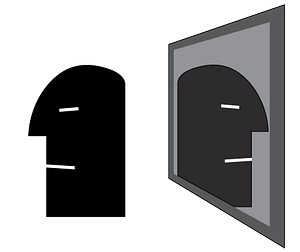 Top of the list is an unwillingness to even look at yourself. This may be due in part from the “ostrich effect”–hoping that by not looking at your own idiosyncrasies (some people call them “idiot-syncrasies”), other people will not notice them either.
Top of the list is an unwillingness to even look at yourself. This may be due in part from the “ostrich effect”–hoping that by not looking at your own idiosyncrasies (some people call them “idiot-syncrasies”), other people will not notice them either.
The truth is, none of us is very good at seeing ourselves. All of our eyeballs face out. This is why executive coaching is still alive and well (see Bill Gates’ video: “Everyone needs a coach“). Until we understand ourselves and how we work, we have little chance of understanding how we are impacting our environments and organizations. And if we don’t understand how we are impacting our organizations, we can never hope to improve them. “Know Thyself”, said Plato.
[one_half_first]
Are you willing to humbly dive in and take a serious look at yourself from other people’s perspectives–your faults as well as your strengths? If so, you are already ahead of so many others who are not willing to pay this first price of admission.
[/one_half_first][one_half_last] [/one_half_last]
[/one_half_last]
2. Inability to be vulnerable; unwilling to try leading in intentionally unfamiliar ways
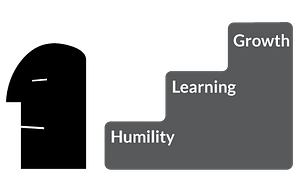 You CAN teach an old dog new tricks, as long as the dog is willing. Is there some point in your life that made you feel like it was OK to “shut down” and not learn new things anymore?
You CAN teach an old dog new tricks, as long as the dog is willing. Is there some point in your life that made you feel like it was OK to “shut down” and not learn new things anymore?
Don’t be the CEO who says, “I don’t need to learn all of this leadership stuff. I’ve always shot from the hip, and it’s always worked great for me.” If you do what you’ve always done, you’ll get what you’ve always got. As Dr. Phil says, “How’s that working for you?” Deep inside, each of us knows that there is room for improvement. Putting blinders on our minds to new ideas will also kill any chance we had to make positive change as a result of those ideas.
If you haven’t watched Brené Brown’s TED talk on “The Power of Vulnerability“, you really have to stop and watch that now. Then think about yourself and how wonderful it would feel to allow your life and influence to grow to a new dimension. After all, how will you lead your organization to a new level if you can’t even bring yourself to a new level? Steven R. Covey said that, “Inner victories precede outer ones” and “change starts from within.”
[one_half_first]
Are you willing to allow yourself to be vulnerable enough to change? If you succeed in changing yourself, you will be surprised what starts to change around you.[/one_half_first][one_half_last]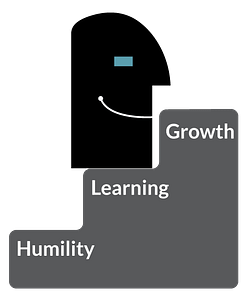 [/one_half_last]
[/one_half_last]
3. Inability to take full responsibility for ALL of the problems within your organization
 I know what you’re going to say: “how could I be responsible for ALL of the problems in my organization?” But it really doesn’t matter whether you are or aren’t. The point is, Growth CEOs aren’t waiting around, wishing that something or someone else in their organization will change. They assume responsibility, which automatically places them in a position to do something about it.
I know what you’re going to say: “how could I be responsible for ALL of the problems in my organization?” But it really doesn’t matter whether you are or aren’t. The point is, Growth CEOs aren’t waiting around, wishing that something or someone else in their organization will change. They assume responsibility, which automatically places them in a position to do something about it.
This is an extremely empowering maneuver, but it requires that you be the one to change first. Take any problem within your organization… are you experiencing negative culture? How much do you think that has to do with your people instead of you? What if you stopped working to change any of them, and instead learned what you could do differently to create a new dynamic. After all, you are the leader! No one has as much power as you.
[one_half_first]
Are you willing to take responsibility for every problem in your company as if it was your own fault? If so, you will put yourself in the right mindset to change the one dynamic that has the most power to change everything in your company–YOU.[/one_half_first][one_half_last] [/one_half_last]
[/one_half_last]
4. Inability to perceive the hidden world of organizational culture, and empowerment
 Which is more real: water, or love? You might think water at first, because you can touch it. But you’ve probably been touched by love too. If love in your heart has ever been broken, it feels like it can almost break you.
Which is more real: water, or love? You might think water at first, because you can touch it. But you’ve probably been touched by love too. If love in your heart has ever been broken, it feels like it can almost break you.
So much of what matters in life and business is invisible. Don’t be the CEO that cops out of the “touchy-feely” stuff in their organization, because it can’t be seen. Don’t be the CEO that purchases a series of exercise equipment and a foosball table to make your company culture seem “real” to your employees, but then ignores their need for leadership growth, their need to shine and create value within their work-groups, and the empowerment they need to innovate. Those unseen things make up your “real” culture more than anything in your physical facilities. (By the way…I love foosball!)
Be the first to learn what leadership styles and attitudes create feelings of empowerment within employees. Be the first to stop a meeting when disrespect or abuse has occurred, and teach your organization that people come first before agendas. Become a believer in the power of vision and culture to attract high performance instead of relying on coercion and control tactics. Your entire organization has a vibe or energy, and you have more to do with it than you ever imagined.
[one_half_first]
Are you willing to open your heart to the real but hidden world of things you can’t see? If so, you will soon watch your organization become more “real” to everyone as well–including your competitors.[/one_half_first][one_half_last] [/one_half_last]
[/one_half_last]
5. Inability to perceive the flow of power through your organization and then redirect it
 Here we come to one of the most important things you cannot see–Power. You can see the effects of empowerment or disempowerment in the faces and attitudes of your people, and how they perform over time. But power is like electricity–you can’t see it. You can definitely feel it though. And everyone you deal with feels it too. It’s why you want certain people on your team and not others. It’s why, when some job applicants don’t feel right, you tell them, “I don’t think you would be a good fit here”–even when they fit the posted job requirements exactly.
Here we come to one of the most important things you cannot see–Power. You can see the effects of empowerment or disempowerment in the faces and attitudes of your people, and how they perform over time. But power is like electricity–you can’t see it. You can definitely feel it though. And everyone you deal with feels it too. It’s why you want certain people on your team and not others. It’s why, when some job applicants don’t feel right, you tell them, “I don’t think you would be a good fit here”–even when they fit the posted job requirements exactly.
If your house was full of electrical circuits (some that did and didn’t work), and you walked around trying appliances in various sockets, you might falsely determine that an appliance was “bad” when in fact it was simply not plugged in to a “live” socket. Like appliances, people are not able to work very well without power and real stewardships. It would be kind of ridiculous to hold them accountable for starting up and performing well for you, when you have not taken the time or care to plug them in. But that’s what we do when we ignore the dynamics of empowerment within our organizations.
As the top leader, you control what behaviors get rewarded in your organization. That means you set the tone, decide what success means, and who will have various roles of responsibility and power over other people. You are literally channeling power with every decision you make, and to not perceive that power is like flinging electricity around with abandon, powering up some people and shocking others. Learn to recognize and channel that power, and you will harness a force that can do what even electricity cannot do–move your entire organization in a new direction.[one_half_first]
Do you find yourself feeling great when you are the only one with power, or do you only feel right when you have ensured the empowerment of others? If you become a good power director, you will feel that power compound over time until your organization has become a Power House.[/one_half_first][one_half_last]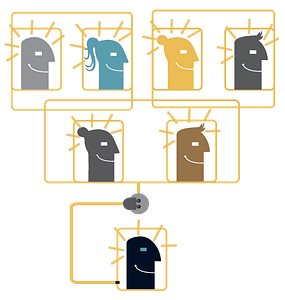 [/one_half_last]
[/one_half_last]
6. Inability to move from transactional to transformational leadership
 Here is the essence of transactional leadership: “I’ll give you $10 bucks/hour if you do this job for me. Do it fast and do it good, or I’ll drop you like a bad habit and find somebody else. Let’s not make this personal… you’re not really a “human being” to me as much as a “human doing” that gets stuff done–my way. Or, if you don’t, then you’ve decided not to work here. No offense, but we need to get crackin’. Do you want some money or not?”
Here is the essence of transactional leadership: “I’ll give you $10 bucks/hour if you do this job for me. Do it fast and do it good, or I’ll drop you like a bad habit and find somebody else. Let’s not make this personal… you’re not really a “human being” to me as much as a “human doing” that gets stuff done–my way. Or, if you don’t, then you’ve decided not to work here. No offense, but we need to get crackin’. Do you want some money or not?”
Here is the essence of transformational leadership: “We’re doing something wonderful at XYZ Corp, and we need talented people with potential like yourself to help us succeed. We can see you adding value in this particular way, but is there another way you might be involved that would be even more valuable? Once you get here, we’ll be looking to you as the expert in your area, and we have high expectations for your performance. We will do everything we can to help you succeed and grow while you do your magic in taking XYZ to the next level.”
The transactional style is easier to manage at first, and then harder forever after–because you have invested very little in the person or their success. They feel as little loyalty to you as you feel to them. They’re basically just waiting for you to fire them, which could literally be any minute, so why should they offer anything but the bare minimum they can get away with? Since they won’t stay long, you also have to deal with a constant turnover in employees. At the extreme, you end up expending more and more energy trying to control mediocre performance from non-willing, unmotivated workers. Not pretty.
The transformational style is harder to manage at first, and much easier forever after–because you have invested in a valuable person and their desire and ability to perform. You have put them in touch with their own “fire” of motivation, and they enjoy leading themselves. In fact, a transformational leader doesn’t hire people who would even want to be managed transactionally, because they are looking for more out of the relationship both ways. They hire self-motivated people with great initiative.
As the world of things becomes more commoditized, the only thing differentiating you from your competitors may be your people. You are never going to compete well if you pay for their smarts and then ask them to leave their brains and innovation at the door.
[one_half_first]
Is your care for the growth and development of your people driving you to lead them transformationally? If so, you may find that they actually care in return, and are willing to create even more value than what you pay them for.[/one_half_first][one_half_last] [/one_half_last]
[/one_half_last]
7. Inability to switch roles – from being a star player to being a coach
 Every Startup CEO is a superstar. They are the best salesperson on their team, and they are usually the highest performer. They are like the all-star basketball player that everyone looks to. New team members that come on the court look to the all-star to lead the way–pass them the ball, give them the opportunity to shoot, etc. The all-star is the ultimate player that is worshiped by the other players and fans alike. With that kind of power and non-stop reinforcement, why would a Startup CEO want to stop being a player? It feels good to be an indispensable, well-regarded, high performing and successful all-star, doesn’t it?
Every Startup CEO is a superstar. They are the best salesperson on their team, and they are usually the highest performer. They are like the all-star basketball player that everyone looks to. New team members that come on the court look to the all-star to lead the way–pass them the ball, give them the opportunity to shoot, etc. The all-star is the ultimate player that is worshiped by the other players and fans alike. With that kind of power and non-stop reinforcement, why would a Startup CEO want to stop being a player? It feels good to be an indispensable, well-regarded, high performing and successful all-star, doesn’t it?
Imagine that tomorrow, you go to work dead. You are there, but in spirit only–you can’t tell people what to do. You have to let them play the game and make the hard calls in the moment, the way that you used to. You have to really let them go (feeling powerless yet?) and watch them fail or succeed based on decisions that you wish you could constantly give them input on. And then you realize that, even without your constant input, they are doing as well as you would have done. In fact, they are often doing better! And now all of them are feeling empowered because they can actually make decisions and move things in the right direction, the way they already knew they needed to, without you and your all-star ego in the way.
Then you wake up. It was just a dream, but you learned your lesson. You determine that instead of being the star player on the court, you will let each person on your leadership team have more control–to be the star player on their own courts, with more autonomy to run their own teams. Your focus shifts from scoring points to enabling people–the well-being of your leaders. What do they need? How can you help? What mirroring can you provide? How can you help them come up with their own answers?[one_half_first]
Are you the kind of coach who is willing to grow your leaders and then let them shine and win the trophies? If so, you will find it much easier to scale your company because you will have many magnificent mini-you’s running around to make things happen. (And let’s not forget… coaches win trophies too! ;-)[/one_half_first][one_half_last]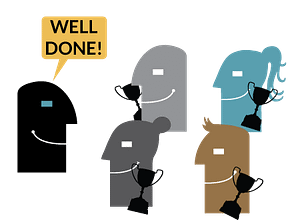 [/one_half_last]
[/one_half_last]
8. Inability to create internal structure and maturity without sacrificing innovation
 How many organizations create a Project Management Office (PMO) and then rip it out a year later because everyone feels controlled and pushes back? How many implement ITIL to mature operations, but then everyone feels like they’re in a cage and can’t move without permission? It’s almost like you have to choose between process maturity and innovation.
How many organizations create a Project Management Office (PMO) and then rip it out a year later because everyone feels controlled and pushes back? How many implement ITIL to mature operations, but then everyone feels like they’re in a cage and can’t move without permission? It’s almost like you have to choose between process maturity and innovation.
But that’s a false dilemma. Structure is not the enemy. The issue isn’t whether you can grow process maturity and innovation together, but how both of them are enabled. As your organization grows in size, you will necessarily need to create some guidelines, policies, and established processes in order for things not to devolve into chaos. But who creates that structure? How are guidelines enforced? Who is pushing for them? A Growth CEO knows that these questions make all of the difference.
The worst thing an organization can do is make a policy covering every possible thing the worst employees at the company might do, resulting in countless rules that only two people need to read, but never do (and why are those two people still there?) The best organizations hire people who are self-governing and hold themselves to high standards of conduct because they expect it already of themselves–they don’t need to be policed. They do, however, want to know how to not do things that hurt the company and create risk. So you start by helping them with the knowledge they need to do things right. Because that’s the kind of employees they are and what they do–they do things right.
Then you trust them to decide what processes (e.g., Change Management guidelines) will best enable the coordination of their work. You encourage them to use best-practice frameworks (e.g., ITIL) for guidance and as a resource, since there is no point in recreating the wheel. Now, as they respond to real problems by creating process fixes, they are allowing current issues to drive process improvement at exactly the right pace to match your organization’s growth.[one_half_first]Are you willing to hire the right people, trust them to deliver value, and then give them the responsibility to decide what structure, technology tools, and other enablers are needed in order to deliver results? If so, you will not risk losing innovation; the drive for structure will be inside-out–coming from your people themselves, which will in fact require their innovation.[/one_half_first][one_half_last] [/one_half_last]
[/one_half_last]
9. Inability to create a culture of safety and trust
 If you want to know what kind of leader you are, notice what you do when everything goes wrong: when people decide not to follow you; when your plans fail, and you are not very respected; and when you are blamed for things that are not even your fault.
If you want to know what kind of leader you are, notice what you do when everything goes wrong: when people decide not to follow you; when your plans fail, and you are not very respected; and when you are blamed for things that are not even your fault.
It is within those moments, when your patience and self-esteem are wearing thin, that your character is most rawly visible (and I’m sure “rawly” is a word). You can bet that everyone is watching you more intensely than usual during those times, because your actions or reactions during stressful moments can have a major impact on their employment, security, safety, and wellbeing. So if they see you lose your nerve or integrity under pressure, or throw people under the bus to protect yourself, or make lame excuses, or a hundred other things that indicate that you are not SAFE as a leader, you will break trust. And breaking trust will eventually break culture.
Character and leadership are practically synonymous. Creating a culture of safety is dependent on the character of the organization’s leader, who must hold the organization to principles of effectiveness and counsel with others in a way that creates cooperation and synergy.[one_half_first]
Are you grounded enough to hold your organization in a protected space that assures that consequences and actions are based on how right they are, not based on the weaknesses and ego needs of the moment? If so, your culture will grow in safety and trust, giving your employees the confidence they need to be weak enough to grow, and to fail until they win.[/one_half_first][one_half_last]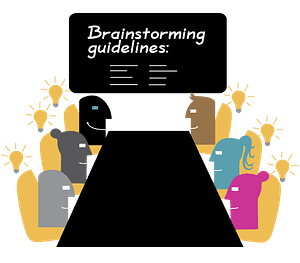 [/one_half_last]
[/one_half_last]
10. Inability to sacrifice performance in the short term in order to permanently improve it
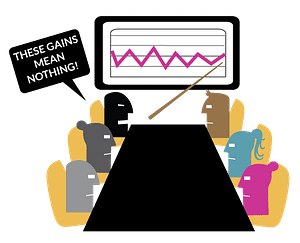 Let’s say you understand everything above–the importance of building internal structure (people, process, and technology) to create a foundation strong enough to support long-term high performance into the future. You’re still not out of the woods! There’s a final irony that can easily kill the whole endeavor, and this is probably why so few companies make the leap from Good to Great. When you dare to be a Growth CEO that focuses on production capability, here is the irony you must deal with: production always gets worse before it permanently gets better.
Let’s say you understand everything above–the importance of building internal structure (people, process, and technology) to create a foundation strong enough to support long-term high performance into the future. You’re still not out of the woods! There’s a final irony that can easily kill the whole endeavor, and this is probably why so few companies make the leap from Good to Great. When you dare to be a Growth CEO that focuses on production capability, here is the irony you must deal with: production always gets worse before it permanently gets better.
Imagine you have a board of directors. As the CEO, you’re responsible to ensure the company looks good, with hocky-stick growth and everything developing nicely. So what will they think when you show up and say, “Listen, we can keep trying to make our mostly-average numbers look good each month, but I’d rather take this company to a whole new level. I know how to create a level of permanent high performance that is double what we have now, and that will stay that way for as long as we lead that way. It will require a new level of leadership that pulls instead of pushes, grows instead of controls, and empowers instead of commands. And it’s going to take some time to put people first and build this new dynamic using new leadership styles and a different kind of culture. But when we’re done, we will have successfully taken our company from Good to Great!” They’re probably going to say, “Let’s do it! What do you need?”
And you will have to say, “I need you to accept a performance level for the first year that is lower than we have seen in years.” Will they go for it? Doubtful. It does take time to grow people and put them first and grow production capability, and during that time you’re not able to produce as much (not everything can be first!)
But then, after the initial investment, your new “normal” level of performance will supersede all of your competitors–as documented in Jim Collin’s book “Good to Great“. Another example is that of John Wooden, perhaps one of the most successful college basketball coaches in history, who won 88 consecutive games at UCLA and 10 NCAA championships…. but won almost ZERO games his first year while investing in his players.[one_half_first]
Do you have the courage to sacrifice the appearance of success today in order to secure it for all of your tomorrows? If you can slow down long enough to get your feet under you, who knows how fast your organization will run![/one_half_first][one_half_last] [/one_half_last]
[/one_half_last]
Reading this list could be your first step on a journey. When your focus for years has been external, it’s not easy to change that focus to the inside organization, empowering others, and structuring internal systems for increased maturity and growth. But if you can pull it off, people may soon be asking for your secret–how you made the transition from Startup CEO to Growth CEO.

